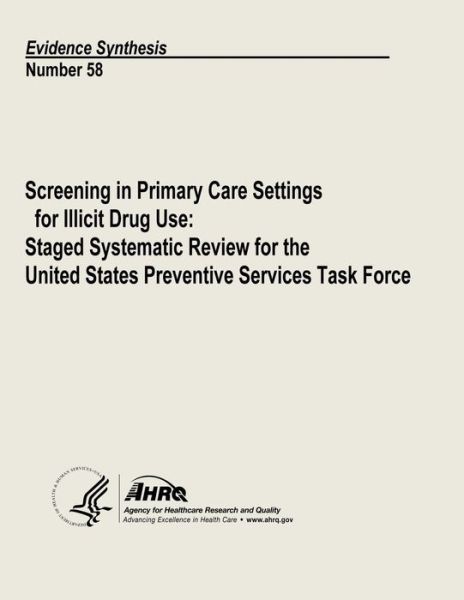
Vinkkaa tuotetta kavereillesi:
Screening in Primary Care Settings for Illicit Drug Use: Staged Systematic Review for the United States Preventive Services Task Force: Evidence Synth
U S Department of Heal Human Services
Tilattu etävarastosta
Screening in Primary Care Settings for Illicit Drug Use: Staged Systematic Review for the United States Preventive Services Task Force: Evidence Synth
U S Department of Heal Human Services
Publisher Marketing: This report is a staged systematic review to update the 1996 U. S. Preventive Services Task Force (USPSTF) recommendation on screening for drug misuse. The USPSTF previously concluded there was insufficient evidence to recommend for or against routine screening for drug misuse in primary care. This report examines whether the evidence for the critical key questions is now sufficient for the USPSTF to make a recommendation on this topic. This report also includes "Screening in Primary Care Settings for Illicit Drug Use - Part 2 'Assessment of Screening Instruments - A Supplemental Evidence Update for the U. S. Preventive Services Task Force.'" Illicit drug use and abuse are serious problems among adolescents, adults, and pregnant women in the United States. To update this topic, we utilized an analytic framework with eight Key Questions: KQ 1. Is there direct evidence that screening for drug misuse reduces morbidity and/or mortality? KQ 2. Do screening tests accurately detect drug misuse? KQ 3. Does screening for drug misuse result in adverse effects? KQ 4. Does treatment for drug misuse among individuals identified through screening improve morbidity and/or mortality? KQ 5. Does treatment for drug misuse among individuals identified through screening result in decreased drug misuse? KQ 5a. Does treatment for drug misuse reduce risk behaviors or improve social and legal outcomes? KQ 6. Does treatment for drug misuse result in adverse effects? KQ 7. Is decreased use or abstinence following drug misuse reliably associated with reduced morbidity and mortality? Part 2 'Assessment of Screening Instruments - A Supplemental Evidence Update for the U. S. Preventive Services Task Force' - Two approaches have been proposed for identifying illicit drug use and drug abuse among patients seen in routine clinical encounters: toxicologic tests of blood or urine, and standardized screening questionnaires. This report focuses only on the second approach. While toxicologic testing can provide objective evidence of drug use, false-positive results due to cross-reactions, contamination, or mislabeled specimens are always possible. More importantly, these tests do not distinguish between occasional users and individuals who are dependent on or otherwise impaired by drug use. At the time the USPSTF last examined the use of standardized screening questionnaires for detecting potential drug problems among patients, few screening instruments had been developed specifically for that purpose, and none had been validated in prospective studies. Most of these are modifications of validated alcohol screening instruments. Some were developed for self-administration by patients; others are screening tools for clinicians or clinical practice staff to administer and score; still others are simply a list of questions intended to guide clinician interviews. The instruments vary significantly in length and in the amount of time required to complete them. To be of benefit in primary care settings, a standardized screening instrument must not only be accurate and reliable in detecting patients with a potential problem: it must also be short and easy to administer so that an undue burden is not placed on the patient or practice staff when it is applied in the busy practice setting. The goals of this review were (1) to identify standardized instruments described in the medical literature that have been designed for detecting use/abuse of illicit drugs; (2) to select those instruments reasonably short enough to have the potential for routine use in a busy primary care practice setting; (3) to determine the extent of published evidence about the accuracy (sensitivity and specificity) and the reliability of potentially useful instruments, and rate the quality of that evidence; and (4) to determine the extent to which validated instruments have been assessed for feasibility and utility when applied in primary care practice settings and among various patient populations.
| Media | Kirjat Paperback Book (Kirja pehmeillä kansilla ja liimatulla selällä) |
| Julkaisupäivämäärä | lauantai 22. kesäkuuta 2013 |
| ISBN13 | 9781490510514 |
| Tuottaja | Createspace |
| Sivujen määrä | 142 |
| Mitta | 216 × 279 × 8 mm · 344 g |

































